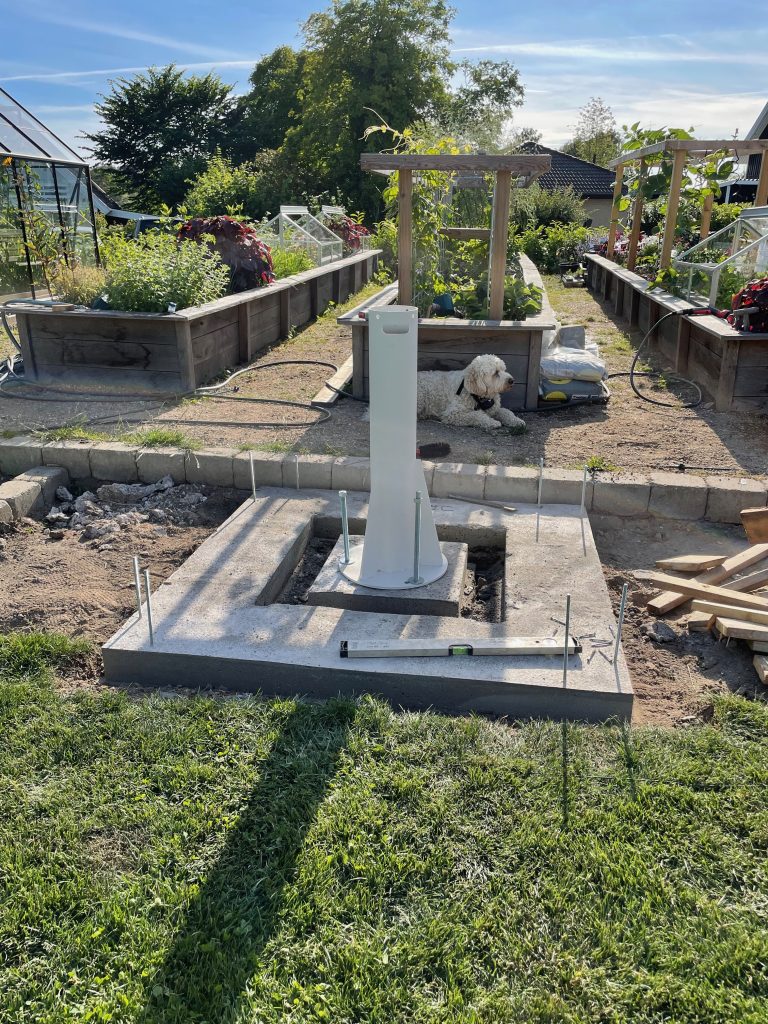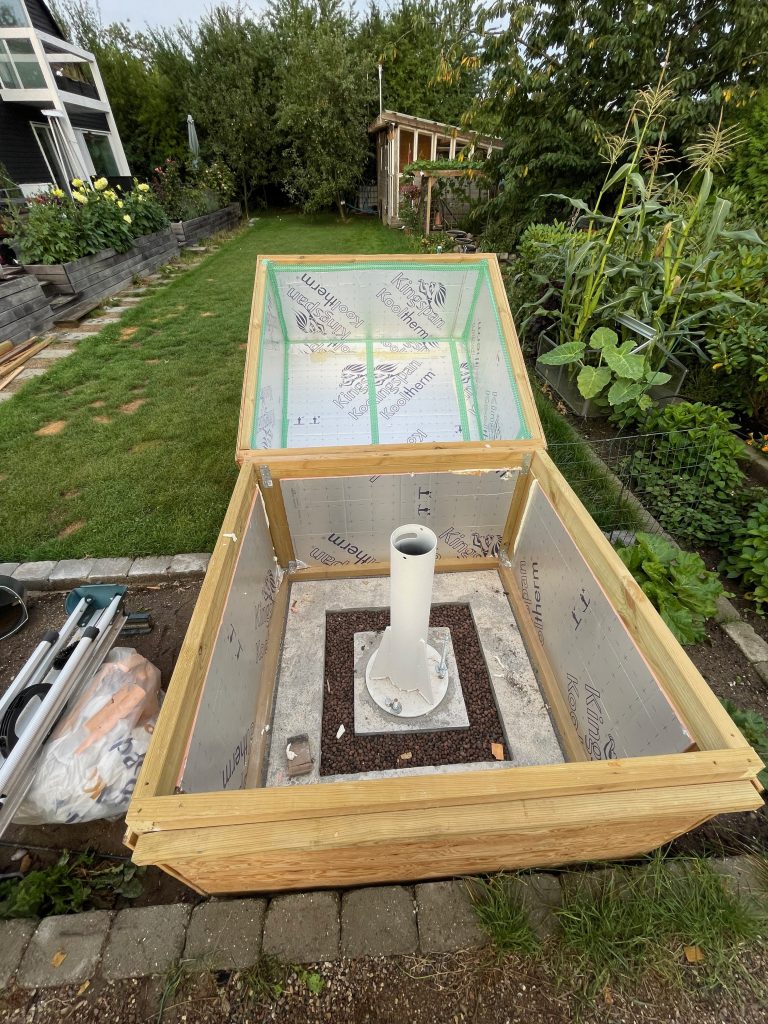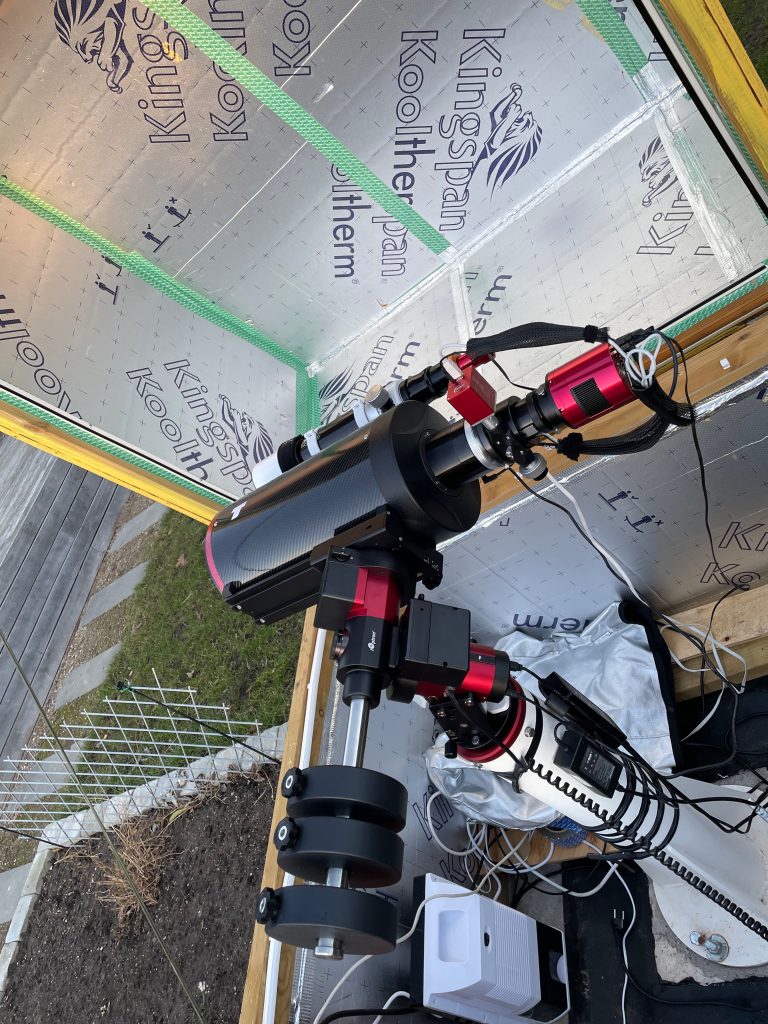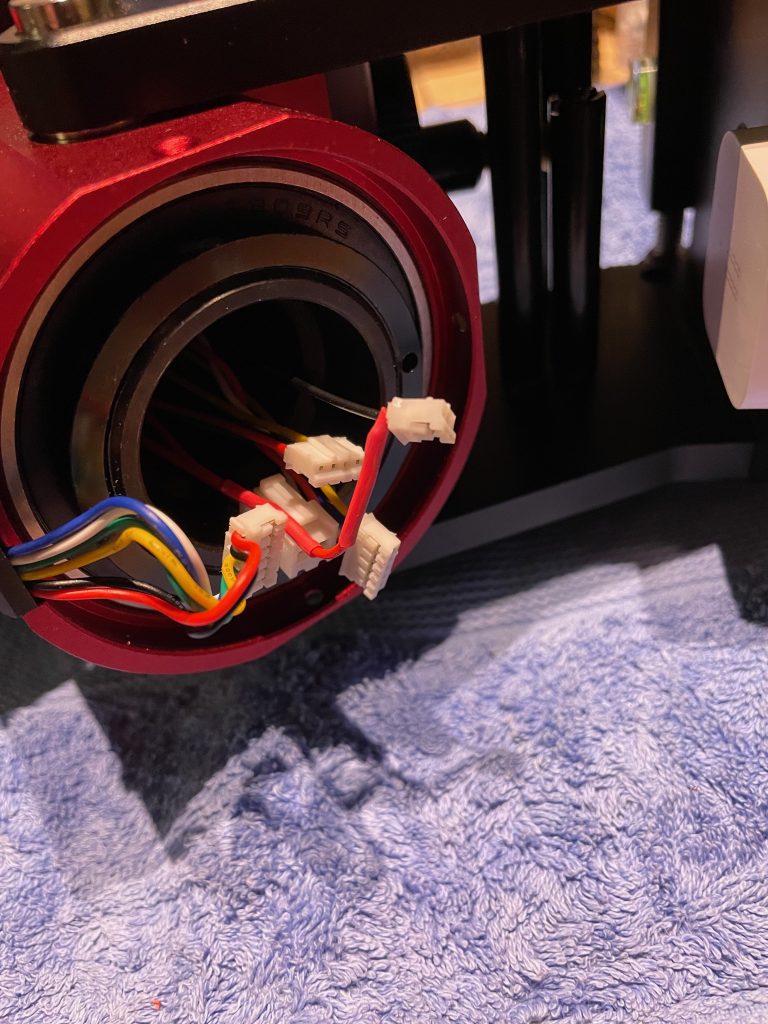Astrophotography Setup
Observatory
The observatory is built around a stationary pier mounted on concrete. The foundation goes to frost-free depth to avoid shifting over time. The pier is mounted on a separate slabs to the wooden frame of the observatory to avoid vibrations on the frame from wind or similar from affecting it.

A wooden frame is build around the pier to protect it from weather. The frame is insulated with PIR insulation in an effort to keep humidity lower.

To keep humidity at a minimum the observatory is heating to 10C using a pipe heat cable wrapped around the pier. This a very low cost solution that uses minimal electricity.
In addition the observatory is fitted with a dehumidifier that is automatically turned on when humidity reaches about 70% (as long as observatory lid is closed) – this is all handled through Home Assistant (see my IoT page)

Mount is put in Park position before closing observatory.
Mount: iOptron GEM45.
Fantastic mount that easily handles heavy payloads with minimal guide error. However, the electronic design of the mount leads to loose connections. The power cables to the USB hub in the telescope sadle runs through the entire mount and moves along with rotation of the mount, this means the cables are pulled leading to fatigue and eventual breaking at the plug. This can be remedied by simply extending the red and black leads going to the 2 pin plug.

Mount connects using USB to an ASIRAir Plus for control and guide camera corrections.
Telescope(s)
I am using two distinct telescopes depending on the target:
TS-Optics Ritchey-Chretien 8″ Carbon tube, using a 0.67 reducer, giving an effective focal length of ~1200mm. The high focal length of this telescope makes it very useful small targets, galaxies or creating very high detail mosaics of larger areas.
The RC8 is around 7.6kg + image train and guide scope – to balance the setup 15kg counter weight is needed. However, the GEM45 handles this just fine.
William Optics RedCat 51 II APO, with an effective focal length of 250mm, making this telescope very widefield and suitable for larger nebulae or galaxy clusters.
Guidescope + guide camera
William Optics UniGuide 50mm, with an effective focal length of 200mm.
ZWO ASI290mm Mini (mono), is used for guide camera. This camera can also be used for planetary photography where high frame rate is more important than sensitivity and noise characteristics.
Main camera
ZWO ASI2600MC Pro, a one-shot-colour (OSC) camera with a very high sensitivity and low noise. The camera sensor can be actively cooled to 35C below the ambient temperature to reduce sensor noise.
Filters
Antlia ALP-T, dual bandpass 5nm filter. That allows light from Hydrogen-Alpha and OxygenIII to be let in. This filter very effectively blocks light pollution, but also clicks some usable spectrum of light from galaxies and certain types of nebula.
Optolong L-Pro, multi bandpass
Electronic Focuser
ZWO EAF